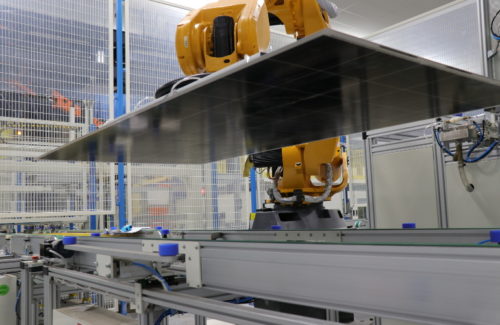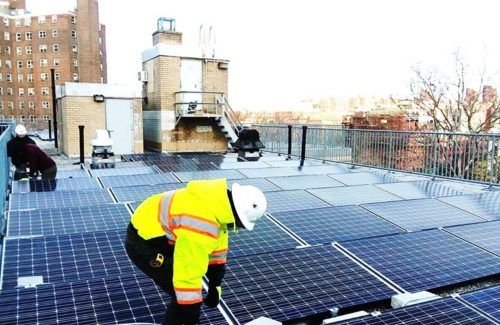President Joe Biden today issued his decision to extend the safeguard tariffs on imported crystalline silicon solar panels for another four years. All traditional, monofacial solar panels imported into the country will be tariffed at 14.75% for the rest of this year, as confirmed by the U.S. Trade Representative. The drop-down schedule should be 0.25% each year (14.5% in 2023, 14.25% in 2024 and 14% in 2025).
In a surprise deviation from the original Trump-era tariffs, Biden decided to exclude bifacial solar panels from the tariff. And the quota of crystalline silicon solar cells allowed to enter the country duty-free for domestic panel assemblers was increased from 2.5 GW to 5 GW.
The tariffs were first enforced in 2018 as a way to prop up domestic solar panel manufacturing. U.S. companies said that cheap solar panels imported from other countries were hurting domestic manufacturing. With imported panels priced higher, domestic panels would better compete in the market.
The solar installation community, supported by advocacy group SEIA, has stated that the tariffs harm solar jobs, since solar panel prices are higher overall. Some projects are priced out, resulting in lost jobs.
“Under the Section 201 tariffs, America lost out on 62,000 solar jobs, including a net-loss of 6,000 solar manufacturing jobs. SEIA remains committed to growing domestic manufacturing, but tariffs aren’t the answer,” said Abigail Ross Hopper, president and CEO of SEIA, in a press statement prior to today’s decision.
While new module manufacturing facilities did open in the United States after the tariffs were first put in place in 2018, the country’s demand far exceeds domestic supply, and a significant amount of solar panels are still being imported. (See our list of U.S. module manufacturers here.) The United States is expected to install 30 GW of solar in 2022 and 32 GW in 2023. If working at full capacity, domestic panel manufacturers (including thin-film) can only supply less than 8 GW. And with no domestic solar cell manufacturers, all U.S. module makers must import crystalline silicon solar cells.

JinkoSolar facility in Florida
According to data provided by Customs and Border Protection, U.S. solar module assemblers did not meet the established 2.5-GW tariff-rate quota (TRQ) for solar cells the last four years — the country imported 2.311 GW of cells in 2020 and 2.098 GW through November 2021 (which further suggests that domestic panel companies are not producing anywhere close to 8 GW). That may change if/when new solar panel assembly companies open in the United States, as a number of new facilities were announced last year based on the expectation of receiving manufacturing tax credits as written in the Build Back Better Act, which of course has yet to pass.






